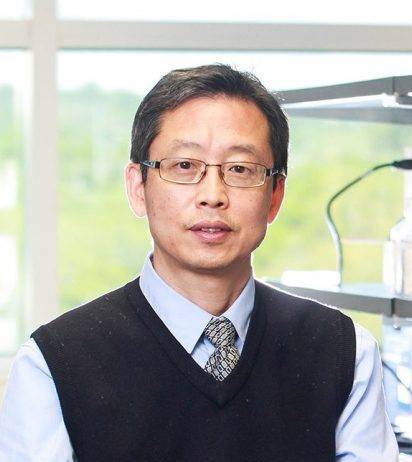
Associate Professor
Dept. of Neuroscience & Regenerative Medicine
Augusta University, Medical College of Georgia
1120 15th Street, Rm. CA4012
Augusta, GA 30912
Phone: 706-667-4826
E-mail: hedli@augusta.edu
Education:
1986-1990 B.S., Biochemistry, Nankai University, Tianjin, P.R. China
1994-1999 Ph.D., Molecular Neuroscience, Wayne State University, Michigan
Postdoctoral Training:
1999-2001 Rutgers University
Research Interests:
Spinal cord injury (SCI) and repair, microRNAs (miRNAs), neuronal reprogramming, neurodevelopment,
glial development, neural stem/progenitor cells, cell transplantation.
My research is focused on miRNA-mediated mechanisms during CNS development and after
SCI. In addition, I combine the in vivo reprogramming technology with miRNA biology
to induce miRNA-mediated neuronal reprogramming from endogenous reactive glial cells
for SCI functional repair. MiRNAs are small and chemically modifiable, which makes
them ideal candidates for therapy as synthetic drug. In fact, some miRNAs are already
in clinical trials. My long-term research interest is to understand mechanisms of
CNS development and injury, and their therapeutic potentials to treat SCI with a focus
on miRNAs.

Current projects:
- MicroRNA function during neuronal reprogramming in treating spinal cord injury (NIH,
R01, PI).
- Manipulating NeuroD1 expression by microRNAs to optimize neuronal conversion for spinal
cord injury repair (NIH, R21, PI).
- In vivo reprogramming reactive astrocytes into functional neurons by microRNA-124
in the injured spinal cord (NIH, R21, PI).

Lab Members:
Xuanyu (Andy) Chen, assistant research scientist
Mei Jiang, research manager
Na Jiang, research assistant
Kris Mayes, PhD student (Biomedical Sciences)
Natalie Mseis, PhD student (Biomedical Sciences)
Christine Williams, undergraduate student (AU Honors Program)
We are currently accepting graduate students. We also welcome motivated undergraduate
students to join our laboratory.
Selected publications:
- Chen X, Li H* (2021) Neuronal reprogramming in treating spinal cord injury (Invited
review). Neural Regen Res (in press).
- Puls B, Ding Y, Zhang F, Pan M, Lei Z, Pei Z, Jiang M, Bai Y, Forsyth C, Metzger M,
Rana T, Zhang L, Ding X, Keefe M, Cai A, Redilla A, Lai M, He K, Li H*, Chen G*. (2020)
Regeneration of functional neurons after spinal cord injury via in situ NeuroD1-mediated
astrocyte-to-neuron conversion. Front Cell Dev. Biol., 8:591883.
- Liu Q, Zhang L and Li H*. (2018) New Insights: MicroRNA Function in CNS Development and Psychiatric Diseases. Curr Pharmacol Rep, 4(2):132-144.
- Liu Q, Jiang M, Kuang Y, Shu X, Li J, Li, M.W. and Li H*. (2017) Dicer1-ablation impairs responsiveness of cerebellar granule neuron precursors to
Sonic hedgehog and disrupts expression of distinct cell cycle regulator genes. Cerebellum, 16:450–46.
- Li H* and Chen G*. (2016) In Vivo Reprogramming for CNS Repair: Regenerating Neurons from Endogenous Glial Cells. (Invited review). Neuron, 2016 Aug 17; 91(4):728-38.
- Zhang C, Ge X, Liu Q, Jiang M, Li, M.W. and Li H*. (2015) MicroRNA-mediated non-cell-autonomous regulation of cortical radial glial transformation
revealed by a Dicer1 conditional knockout mouse model. Glia, 63(5):860-76.
- Hong P, Jiang M and Li H*. (2014) Functional requirement of Dicer1 and miR-17-5p in reactive astrocyte proliferation
after spinal cord injury in the mouse. Glia, 62(12):2044-60.
- Kuang Y, Liu Q, Shu X, Zhang C, Huang N, Li J, Jiang M, Li H*. (2012) Dicer1 and MiR-9 are required for proper Notch1 signaling and the Bergmann glial phenotype
in the developing mouse cerebellum. Glia 60(11):1734-46.
- Yan H, Hong P, Jiang M, Li H*. (2012) MicroRNAs as potential therapeutics for treating spinal cord injury. Neural Regen Res. 7(17):1352-1359.
Dr. Hedong Li’s NCBI Bibliography link
Media news about our research:
Penn State News AU Jagwire The Augusta Chronicle



